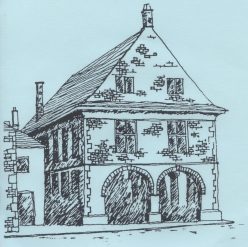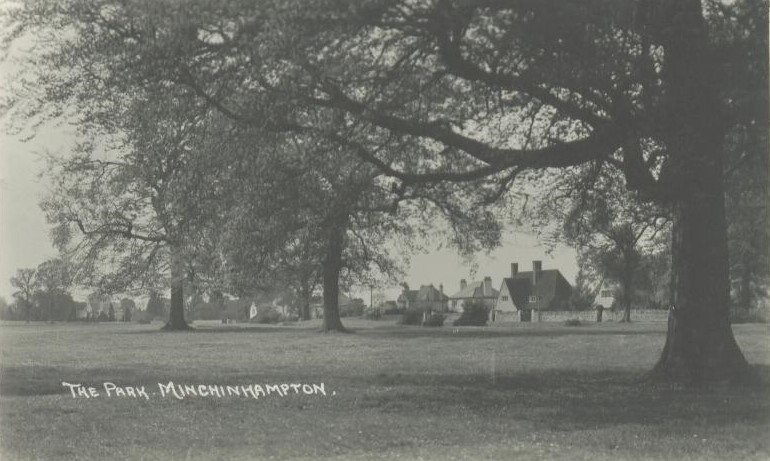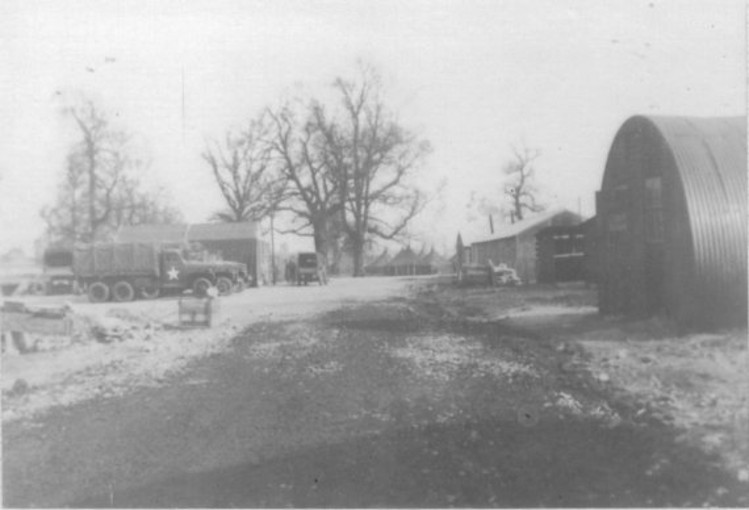Population was attracted into the area in the early years of the last century, and it has been suggested that the increase in building around the area was due to the open space and nearby golf course, whilst “the beauty of the scenery and the healthiness of the situation making it a favourite place of residence”. These reasons still hold good today! Both on the northern and southern fringes of the town there are examples of “Arts and Crafts” houses. On the north side of the Great Park are the gabled Frome Top, Highfield, Greystones “probably by Jewson … a more refined version of Highfield” and Upmead, “in much more spacious grounds, 1925 by Falconer, Baker and Campbell for Miss Hartley, the jam heiress.” (Buildings of England). Hunters Lodge is probably by Ernest Barnsley, dated 1922. Two other large houses by Thomas Falconer stand on the south side of the park, Bowman’s Green and Windrush. The former is on a butterfly-shaped plan, and there are smaller houses of 1933 on the Butt Street side. The work people of the town still inhabited the smaller cottages, some of which, like those in West End, had changed little since the C17th. This road carried the main traffic into the town and it was busy with horse traffic, although without a firm road surface or pavements which did not appear until much later. One householder was fined for having two heaps of manure in front of his cottage!
The two global conflicts of the C20th had a profound impact upon the area. In the Great War many young men, as happened all over the Empire, answered the call to arms, some never to return. In their memory a subscription list was set up, and as well as contributions from the gentry, major householders and working classes there was a donation from the Australian Flying Corps who were based at Minchinhampton Aerodrome at the end of the war. The initial plan was to purchase the Lower Island buildings that stood at the top of the High Street, to use as almshouses or a club for returning soldiers but they were very dilapidated, and a decision was taken to remove them and erect a memorial cross in their place. Sidney Barnsley, one of the celebrated craftsmen known as the Sapperton Group, was chosen to design the memorial. He is responsible for other crosses in Gloucestershire and his brother, Ernest, was the architect of Westfield at Park Corner.
In 1938, less than twenty years after the dedication of the War Memorial, R.A.F. Aston Down was opened, the name having been changed at the request of the residents of Minchinhampton who feared, not enemy attack, but a fall in the value of their houses! This was to become a major centre for the maintenance of both fighter and bomber aircraft, and for the training of the pilots and aircrew.
At the outbreak of war, evacuees came to the area, first from Birmingham and later from Essex, and younger visitors were incorporated into the rolls of Minchinhampton and Amberley Schools. Two boarding schools from the London area found new premises here, which they occupied for several years. Local hotels also played a part, not only providing accommodation for people moving from the Home Counties, but their grounds were also used for fund-raising events for the war effort. Lady de Clifford, Norman Hartnell, Lady Baden-Powell and the novelist P.C. Wren all spent some time at Moor Court Hotel in Amberley.
The civilian population felt directly involved in the conflict and Minchinhampton was ready for any attacks, with several local Home Guard Companies. Aston Down was thought to be the main target for the enemy, but “If these preliminary attacks were successful the enemy might signal for airborne reinforcements. Troop carrying planes require more space for landing and would probably choose the common between Amberley and Minchinhampton. Here again the general movement would be eastwards, and Minchinhampton or its approaches would almost certainly become involved in fighting, as the town lies in the direct path of the hostile operation envisaged.” (Minchinhampton War Book)
Thankfully, the threat never came, and as the tide of war turned, the Great Park became home for a few months to American soldiers who were preparing for Operation Overlord. They were an engineering company, and in a dry summer the marks of their roads and huts can still be traced. This was the era of a colour bar in the U.S. Forces; the black Americans had a camp near Box. For many children this was the opportunity to sample chocolate and sweets, or nylons for the young women, who fondly remember the G.I.s at the dances held in the Market House.
A year later the return of peace was celebrated with great gusto in Minchinhampton. A band of people with a barrel organ and monkey made an impromptu collection of £50 for children’s tea and sports. Friday Street was decorated with beech boughs, renamed “Hero Street” and the oldest resident crowned “Queen of the Street”. Chairs were put out, wine was drunk from the barrel and a piano was produced for dancing. A church service was held, and a bonfire lit in the Market Square. The Gloucestershire Regiment was serving in the Far East, so the town celebrated the victory over Japan, with residents donning fancy dress and entertaining the children. In the evening a torchlight procession made its way to the Park where a bonfire was lit.
Until the 1950s life remained hard for much of the English population, and with building materials in short supply, and efforts concentrated in rebuilding the cities, little changed in the rural parts of Gloucestershire. Farmland could still be found close to the centre of town, and many of the cottages were in need of urgent updating. Mains electricity had come to the town in the late 1930s, but the old gas streetlights were not converted until 1953. However, new housing began to be provided, starting with the development of council housing on the fields at the Glebe. Several phases were constructed, including George Pearce House, consisting of sheltered accommodation for the elderly. A small road off West End leads to Park Farm Court, another group of elderly person’s dwellings converted from old farm buildings and still called “The Piggeries” by older residents! Private houses were created out of the barns and sheds of the farm. The greatest period of expansion was the mid 1960s, when the fields either side of Dr. Brown’s Road were developed with houses and bungalows, and a similar estate built at what became known as Besbury Park. Over four hundred dwellings were added to the town in a period of just three years.


